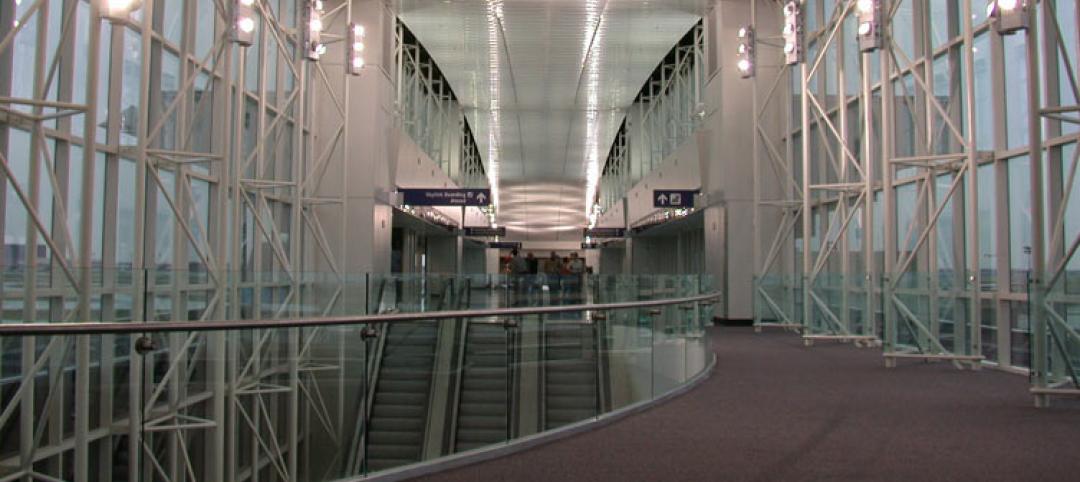Construction costs in North America rose for the 22nd consecutive month in November as labor costs continued to increase, amid growing industry concern over the tight availability of skilled workers.
The Engineering and Construction Cost Index (ECCI) registered 53.2 percent in November, up from 52.6 percent in October, according to IHS Inc. (NYSE: IHS) and the Procurement Executives Group (PEG). The ECCI indicates that construction costs in North America have been on the rise for nearly two years since January 2012.
The attached figure presents the monthly results of the ECCI. A number higher than 50 indicates a monthly increase in prices paid, while a reading lower than 50 shows a price decline.
The index divides construction costs into two major categories: materials/equipment and subcontractor labor. With the materials/equipment portion of the index hovering near 50 since April, it was the labor segment that drove the increase for the month.
The current subcontractor labor index climbed to 58.5 percent, up from 56.4 percent last month, with the strongest gains in November concentrated in Western Canada as well as in the southern and western regions of the United States.
Shale shock
The shale gas boom in the United States is playing a major role in driving increased spending on construction and rising costs for associated labor in North America.
“Labor concerns have been reported in the U.S. Gulf Coast, where demand from new downstream energy projects is expected to increase,” said Laura Hodges, director of the pricing and purchasing service at IHS. “Some in the industry are even suggesting shortages of skilled laborers such as welders and pipefitters in 2014 because of increasing investment in such projects.”
For several years, materials costs were the major factor driving up expenses for North American construction firms, as China’s economic boom ate up the available global supply. However, as China’s growth has slowed, the focus has shifted from materials to labor.
North American construction companies now say their main concern is the continued increase in labor costs. With U.S. spending on construction on the rise and skilled workers aging, the availability of skilled laborers is likely to become tighter.
While costs for these skilled laborers are on the increase, the wage inflation is not likely to climb as high as it did in 2007, when a strong U.S. economy spurred double-digit annual pay increases for these skilled areas. This is largely because the strength of the U.S. economy is not as uniform as it was 2007 and employers are investing in training and mentoring programs to be prepared for this next wave of activity.
The material world
Looking at the material/equipment segment of the ECCI, November recorded the seventh consecutive month of falling prices for carbon steel pipe and a fourth month of declining freight rates between Asia and the United States. Copper-based wire and cable and fabricated structural steel also joined the ranks of falling prices in November and moved below the 50-percent threshold.
About the ECCI
The IHS/PEG Engineering and Construction Cost Index (ECCI) is a diffusion index based on data independently obtained and compiled by IHS from the procurement executives of leading engineering, procurement, and construction firms. The headline index tracks industry-specific trends and variations, identifying market turning points for key projects, and is intended to act as a leading indicator for wage and material inflation specific to this industry.
Each survey response is weighted equally for every $2 billion in spending in North America. Respondents are asked whether prices—either actual paid transactions or company-informed transactions—during the current month for individual materials, equipment, and regional subcontractor rates, were higher, lower or the same as the prior month.
Respondents are then asked for their six-month pricing expectations among these same subcategories. The results are compiled into diffusion indexes, in which a reading greater than 50 represents upward pricing strength and a reading below 50 represents downward pricing strength.
Related Stories
| Aug 22, 2013
Energy-efficient glazing technology [AIA Course]
This course discuses the latest technological advances in glazing, which make possible ever more efficient enclosures with ever greater glazed area.
| Aug 21, 2013
Why research is the ticket to successful airport wayfinding
Wayfinding is more than just signs; it requires a holistic approach based on communicating information that helps people make the right decision at the right time.
| Aug 19, 2013
Discovery of hidden asbestos complicates DFW terminal renovations
The finding of more asbestos in Terminal B than expected, and the pending merger of US Airways and the airport’s largest tenant, American Airlines, is causing construction delays on a $2.3 billion Dallas/Fort Worth Airport terminal renovation.
| Aug 19, 2013
Integration of solar panels in building skin seen as key net-zero element
Recent high-profile projects, including stadiums in Brazil for the upcoming World Cup and Summer Olympics and a bank headquarters in the U.K., reflect an effort by designers to adopt building-integrated photovoltaics, or BIPV.
| Aug 14, 2013
Green Building Report [2013 Giants 300 Report]
Building Design+Construction's rankings of the nation's largest green design and construction firms.
| Jul 29, 2013
2013 Giants 300 Report
The editors of Building Design+Construction magazine present the findings of the annual Giants 300 Report, which ranks the leading firms in the AEC industry.
| Jul 22, 2013
Transportation Facility Report [2013 Giants 300 Report]
Building Design+Construction's rankings of design and construction firms with the most revenue from airport terminals and other transportation-related facilities, as reported in the 2013 Giants 300 Report.
| Jul 19, 2013
Renovation, adaptive reuse stay strong, providing fertile ground for growth [2013 Giants 300 Report]
Increasingly, owners recognize that existing buildings represent a considerable resource in embodied energy, which can often be leveraged for lower front-end costs and a faster turnaround than new construction.
| Jul 18, 2013
Top Local Government Sector Construction Firms [2013 Giants 300 Report]
Turner, Clark Group, PCL top Building Design+Construction's 2013 ranking of the largest local government sector contractor and construction management firms in the U.S.
| Jul 18, 2013
Top Local Government Sector Engineering Firms [2013 Giants 300 Report]
STV, URS, AECOM top Building Design+Construction's 2013 ranking of the largest local government sector engineering and engineering/architecture firms in the U.S.














